Epsom salt, also called magnesium sulfate in chemical terms, has been recommended by gardeners as a supplement for strong tomato plants. Thus, in this blog, we are going to have an extensive analysis of how Epsom salt works and is beneficial when growing tomatoes based on scientific theory and real-life experiences. Tomato growers can boost their crop vigor and yield by including epsom salt in their maintenance programs. This article will discuss how often to use or apply Epsom salt, different ways of application, and possible benefits to ensure even beginners can use it without any fear that they will get a bad crop from using the wrong techniques.
Determining the Right Frequency for Epsom Salt Application
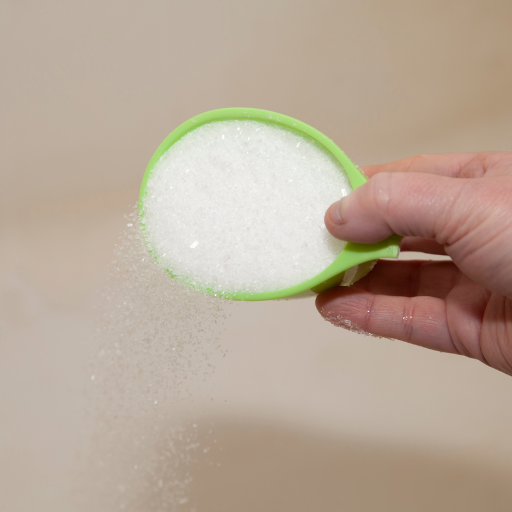
Several factors determine how often Epsom salt should be applied to tomato plants: the level of magnesium in the soil, the stage at which a plant is growing and individual plant needs. Typically, one application every two weeks is enough for most tomato plants. At initial stages of growth a tablespoon per hole of Epsom salts should be incorporated into the soil during planting. In the case of mature crops, it can be used as foliar spray or drench in water (1 table spoon to a gallon) once in every 14 days. Regular soil testing and observing plants are vital because too much magnesium will cause nutrient imbalances. The observed plant health and growth performance should guide any adjustments.
How often should you use Epsom Salt on Tomato Plants?
Epsom salt application frequency for tomato plants should depend on several factors such as; soil magnesium levels, growth stages of the plants and specific needs of each plant. A bi-weekly application would do for a majority of tomatoes. During planting, mixing about 1 tablespoon per planting hole of Epsom salt gives an early boost in magnesium content needed by tomatoes. As they mature, this solution consisting 1 tablespoon per gallon of water can either be used as foliar spray or soil drench after every two weeks . Regularly check your soils through carrying out soil tests because too much magnesium may lead to some nutrient imbalances due to competition among nutrients in the medium thereby leading to inadequate supply of calcium or potassium nutrients needed by other crops besides tomatoes which might also have been planted nearby.
Factors Influencing Epsom Salt Application Frequency
There are several factors that greatly influence the frequency at which Epsom salts are applied to tomato plants, but the top among them is soil magnesium levels—high initial Mg reduces the need for frequent applications. Before planting and during the growing season, conduct soil tests to determine Mg concentration, which will guide you in adjusting Epsom salt application.
The growth stage of tomato plants also plays a critical role. In the early development stage, root and leaf development requires more magnesium, hence justifying its addition while transplanting the plants. It is, therefore, better to maintain biweekly applications with water solutions containing 1 tablespoon of Epsom salt per gallon because fruiting has set in towards the production period of these crops.
Plant-specific needs should be monitored through consistent observation. A case in point would be yellowing between leaf veins, which suggests magnesium deficiency and implies an urgent need for application. On the other hand, too much magnesium can result in less fruit setting and curling of leaves, which then calls for reducing the intervals between application rates used.
Seasonal Considerations for Epsom Salt Use
The effectiveness and necessity of using Epsom salts vary greatly depending on seasonal factors. In early spring, when tomatoes are planted to establish roots, an initial soil test for magnesium content should be conducted. In such periods, slightly higher frequency may be needed to support rapid root and leaf development, usually at planting time plus every two weeks thereafter (Cousins et al. 2009).
On the other hand, magnesium demand can increase in summer because of high temperatures and fruiting plants. Nutrient levels must be maintained at a consistent level without going beyond limits with a bi-weekly application of 1 tablespoon Epsom salt per gallon of water. Close observation of plant responses is essential, as magnesium uptake problems can be worsened by high temperatures and erratic watering.
Towards the end of summer and the start of fall, when plants are almost done with their growth cycle, there is no need for high magnesium content. This will cause nutrient imbalance during the final stage of fruit ripening; therefore, reducing application to only once a month would be better. Observing how environmental factors change and adapting the use this substance appropriately can help boost tomato plant health while maintaining their productivity throughout their lifecycle.
Benefits of Regular Epsom Salt Application
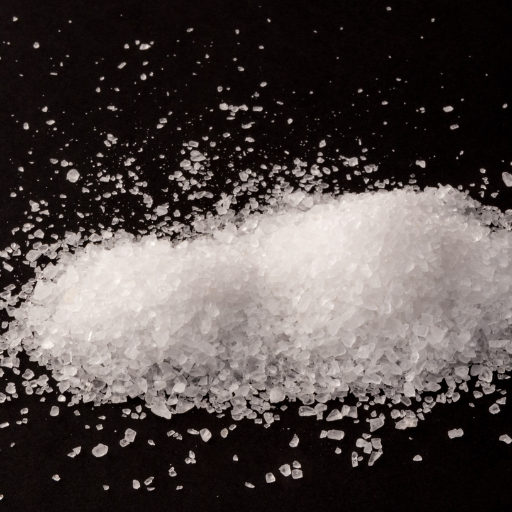
Regular application of Epsom salts to tomato plants has several advantages, primarily because it increases magnesium content in soil which is critical for chlorophyll production. Consequently, photosynthesis becomes more efficient thus encouraging the growth of leafy green foliage and healthy plant structures. In addition, stronger cell walls are developed by Epsom salt thereby leading to a more robust plant structure that is resistant to diseases and other harsh weather conditions. Using Epson salt to ensure an optimal magnesium level can lead to higher yields with improved fruit quality as characterized by deeper colored fruits and better taste. Lastly, the presence Sulfur in Epsom salt plays a vital role in forming important enzymes and protein molecules essential for overall healthiness and productivity.
The Use Of Regular Epsom Salt To Enhance Tomato Growth
This brings us back to the benefits side of using Epsom salt, where continuous usage will provide technical advantages needed for better tomato growth. Magnesium Sulphate is comprised of magnesium and sulfur as its constituents when placed into soil. This is important since Chlorophyll formation needs Magnesium hence, it’s a very important element during the photosynthesis process.Towards this end plants conduct more energy through increased photosynthesis resulting into robust growth rates accompanied by healthier leaves plus sulfur helps synthesize amino acids and proteins, which lead to sturdiness against diseases (Gillman 18).
On the other hand from a technical perspective 1 tablespoonful of Epsom salt per gallon water following which it can be applied as a foliar spray every two weeks throughout the growing phase as advised by researches. Alternatively, they could be used directly on the roots, sprinkled around each plant at 1 tablespoon per individual plant stand. Such applications prevent nutrient imbalances while ensuring steady magnesium supply levels without leaching away due to their ability to maintain consistent moisture levels (Waters 27). This routine has proven to be effective in enhancing tomato yields and quality based on empirical data from leading horticultural sources which have shown increased fruit size, color pigmentation, and taste. For example, regular monitoring of soil pH (ideally between 6.0 – 6.5) and magnesium levels can ascertain appropriate rates and application timing per specific soil conditions prevailing under different climates.
A more Productive Fruit with Regular Epsom Salt Applications
The use of a consistent application of Epsom salt significantly increases the number of tomatoes produced by a tomato plant. Studies suggest that precise measurements should be considered when using these methods, according to well-respected resources in horticulture. Such as for instance, University Of Maryland Extension suggests that 1 tablespoonful of Epsom salt per gallon is used as foliar sprays after every two to four weeks. It leads to quick absorption by the leaves hence immediate up take of Mg-So4 since it enhances chlorophyll production consequently increasing energy availability for the overall metabolism.
Additionally, Texas A&M AgriLife Extension conducted research that supports their method of applying it directly on the ground, where one tablespoonful is distributed evenly around each base stem of all plants or seedlings before they are covered with soil . This ensures a continuous supply of Mg over time at a rate commensurate with plant growth, especially during the fruiting phase. These measures are very important in soils exhibiting low magnesium level or in high yielding cultivars therefore demanding more nutrient supply from the soil since more nutrient loss occurs due to leaching while maintaining moisture consistency (Jones & Culpepper 66).
Regular soil tests should also be conducted to monitor pH levels that should be kept within the range of 6.0 to 6.5 and magnesium values. For example, as per growth region’s nutrient profile and weather conditions, any adjustments on Epsom salt usage can be performed by applying the right nutrients. In addition, there are other reasons cited by Colorado State University Extension Services for such personalized practices: The fruit size and taste will reach their optimum; while the plant will develop a resistance towards different environmental stresses, like droughts or frost. Gardeners and growers aiming at massive improvements in tomato yield as well as its quality were recommended to take into account scientifically approved recommendations.
The Importance of Regular Use of Epsom Salt to Keep Plants Healthy
When incorporating Epsom salt in your gardening activities, it is important to ensure that you use it correctly so as not to jeopardize plant health and promote maximum development. First of all, dissolve the Epsom salt in water before it is used; for instance, mix one tablespoon per gallon of water, then use this solution either as a foliar spray or directly on the ground. Thus, regular soil tests can determine nutrient deficiencies and help adjust your dosages concerning Epsom salts accordingly. Magnesium contained in Epsom salts is especially helpful for tomatoes and peppers when taking care of these plants in your garden; however, consider growing environments and types of plants before setting application rates. Besides treating leaf yellowing which is a clear sign of magnesium deficiency promptly once appearing on your plants’ leaves; particularly tomatoes For optimum outcomes both foliar sprays and soil applications must be rotated thus satisfying all nutritional needs effectively
Adjusting Epsom Salt Frequency Based on Plant Growth Stages

When growing plants during the initial stages of development like planting and vegetative periods, less frequent applications of Epsom salts (normally once a month) are required for basic plant development. However, as plants move into flowering and fruiting, the need for magnesium in them increases. This may mean increasing application to bi-weekly rates which ensures sustained nutrient availability that promotes good fruit set, hence preventing the occurrence of magnesium deficiency symptoms. Always watch out how your plants respond to these applications and adjust accordingly to avoid over-application leading to nutrient imbalances.
Epsom Salt Application on Tomato Seedlings
It is recommended to start with a low rate when applying Epsom salt on tomato seedlings so as not to cause any nutrient imbalances. Mix one tablespoonful of Epsom salt with water in a gallon container until it dissolves completely. This mixture should be used at least once every 3-4 weeks when watering seedlings in order to provide enough magnesium required for optimal growth. Watch out as they develop because you can observe signs of magnesium deficiency such as yellowing between their veins. Take care not to exceed recommended rates but adjust if necessary.
Using Epsom Salt at Flowering and Fruiting Stages
During flowering and fruiting periods, increased requirement of magnesium by plants helps in supporting important biological processes such as production of chlorophyll or activation of enzymes. To meet this demand dissolve 1-2 tablespoons of Epsom salt in a gallon of water; apply this mixture twice per week into soil sampling areas; This regular dosing ensures an even supply of magnesium thus promoting healthier blooming and better fruits; For foliar applications take care not to spray after mid-day since these can cause burning on leaves; Weekly monitoring eliminates deficiencies common among our species enhancing general plant performance.
How Do You Adjust The Use Of Epsom Salt In Mature Tomato Plants?
As tomatoes grow up, there roots develop and become more efficient in uptaking nutrients from the soil. Hence, you may have to drop the rate or frequency of Epsom salt application due to too much magnesium.
Begin by checking how healthy the plants are. Keep applying 1 tablespoon of Epsom salts dissolved in a gallon of water every month as long as there is no sign of magnesium deficiency such as interveinal chlorosis or slow growth. This infrequent use will ensure they get enough magnesium necessary but not that much to cause nutrient imbalances.
When sensing signs of deficiency, apply 1 tablespoonful of Epsom salts per gallon of water regularly, but not after three to four weeks. To determine if the condition improves, always observe the plant’s response after application and adjust accordingly.
Besides using them as soil applicators for faster results during critical growth stages, foliar sprays could also be employed. Add one tablespoonful of Epsom salt into a gallon can filled with water and apply this solution through spraying over leaves either in early morning or late evening so as to avoid burning effects on leaves; Always inspect your foliage to make sure that there is no any negative reaction or toxicity related to nutrient problems.
Lastly, you can conduct a soil test to know the magnesium levels and total nutrient profile. This information will help refine the application of Epsom salt and maintaining a balanced nutrition supply that caters for the needs of the ripe tomato plants.
Application Methods and Their Impact on Frequency
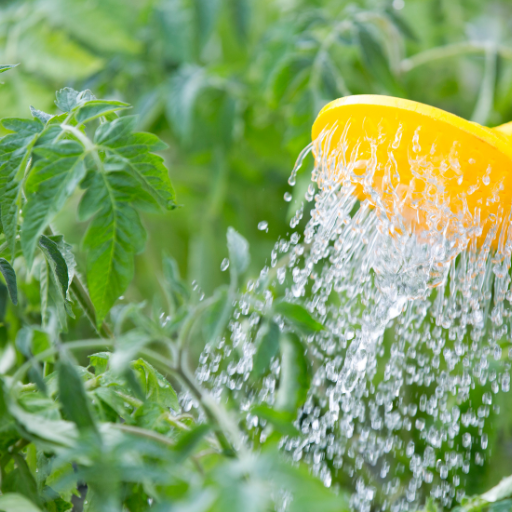
The simplest way of applying Epsom salt through the soil is to integrate it directly into the soil or dissolve it in water and pour over. This method allows the roots to absorb magnesium for an extended period, thus making it good for basic and maintenance purposes. The frequency of using this method should be properly controlled; excessive use can cause a nutrient imbalance and toxicity in soils.
Conversely, foliar spraying is a quick means of providing useful nutrients, especially during peak growth periods or when deficiencies need to be corrected rapidly. This technique introduces magnesium directly onto leaves so that plants can quickly use it. Nonetheless, foliar sprays must be few in number and timed accurately, like early morning or late evening, to avoid sunburning.
Lastly, we can employ drip irrigation systems to supply diluted Epsom salt solutions directly into the plant root zone. This method ensures even distribution which can be beneficial especially on bigger scales. Inclusion of epsom salts in a drip irrigation regime necessitates careful calibration such as maintaining appropriate concentration levels that prevent build-up around the roots possibly entailing lesser frequencies of application.
To sum up, how Epsom salt will be used often varies depending on its mode of application. Soil applications require less frequent dosing because of their long-term effects while leaf sprays need fine timing and have a higher potential for occurrence but risks leaf burning due to sunlight exposure while dribbles will always demand day-to-day monitoring to avoid oversaturation with nutrients. Regular evaluation plus soil analysis remains vital towards optimizing the usage of Epsom salts without compromising mature tomato crop quality.
What are some best ways one can apply Epsom salt into the soil?
When applying Epsom salt to soil, you should do some things right so that you get maximum benefits at no cost. Firstly, mixing 1 tablespoonful (14g) with one gallon (3.78541 liters) of water is the standard recommendation for normal watering. This concentration ensures that magnesium and sulfur supplied by Epsom salt are available appropriately to plants without causing nutrient imbalances.
Adding Epsom salt to the soil before planting is recommended for initial soil preparation. This can be done by spreading approximately 1 cup per 100 square feet and then deeply mixing it into the top 6 inches of soil. It helps in establishing a balanced foundation of nutrients for new plantings.
Management of application frequency is crucial for established plants. Normally, a diluted solution 4-6 weeks after each growing season when using one tablespoonful (14g) with one gallon (3.78541 liters) of water should suffice. Such regularity enables sustainable nutrition intake while eliminating any risks on account of soil poison.
Routine soil testing is essential to monitor magnesium levels since excessive use may lead to nutrient imbalances and plant health deterioration. Optimum soil magnesium levels should range between 25 and 50 ppm (parts per million). If tests reveal magnesium contents higher than this limit, then applications must stop or decrease to prevent toxic effects.
Lastly, always ensure that the land drains well to help in proper uptake and avoid drowning, which affects flow and thus reduces their availability inside plants. These best practices will assist in the optimum use of Epsom salts for healthy crop growth supported by technical considerations.
The Impact of Foliar Sprays on the Frequency of Epsom Salt Application
Foliar sprays can greatly influence how often Epsom salt is applied by providing a direct and immediate means of delivering nutrients to plants. When foliar sprays are used, Epsom salts can be put onto leaves where magnesium and sulfur quickly enter through stomata. This makes it especially useful for acute deficiencies.
According to agronomic studies, foliar applications should use between one and two tablespoonsful of Epsom salts per gallon of water every other week. This rate ensures that magnesium is available quickly for chlorophyll production leading to enhanced photosynthetic efficiency. Furthermore, spraying allows for focused application hence reducing soil nutrient imbalances as a result of overuse.
It should be noted that leaf burn may occur if the foliar sprays are not done at cooler times such as early morning or towards evening and thus hinder optimal absorption. Regular monitoring of plant response besides leaf tissue analysis helps fine tune application amounts so that the levels remain between 0.2% or more than 0.4% dry leaf weight.
In conclusion, although foliar sprays provide a quick way to correct magnesium deficiencies, they must be cautiously integrated with other fertilizers to avoid overdosing and maintain balanced nutrient status.
Combining Application Techniques for Maximum Effectiveness
A combination of both types, soil and foliar applications, will maximize plant health alongside nutrient uptake. Soil applications must have about 1-2 tbspns/gallon water directly into the soil around the base every month (bi). By doing so this way, there would be a continuous supply of magnesium plus sulfur to the root system, leading to sturdy growth as well as development. In contrast, bi-weekly administration with a concentration of 1-2 tbspns /gallon water is ideal when using the spray method illustrated before.
To prevent imbalances due to such factors as potential deficiencies in Mg, soil pH needs to be tracked, and soil test kits should be used to determine the levels of magnesium that are within the desired interval of 50-200 ppm. This holistic approach using foliar and soil applications ensures a balanced nutrient supply, producing optimal chlorophyll for overall plant health. Periodic analysis of leaf tissues and soil composition provides data-driven insights which can enable precise adjustment of application rates maximizing fertilization efficacy.
Monitoring Plant Response to Epsom Salt
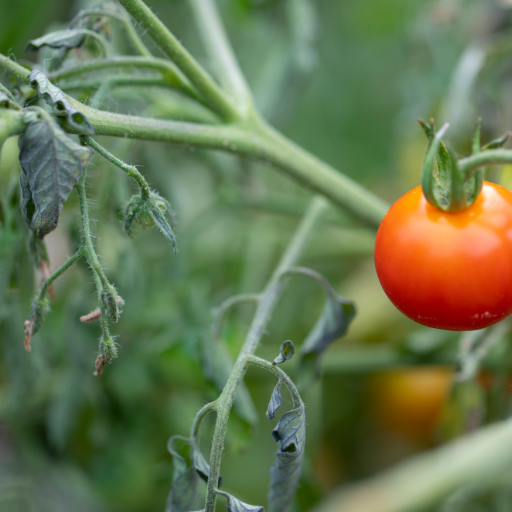
For the Epsom salt treatment to be effective and not cause harm, a number of key things must be done in the process of monitoring plant response. Firstly, one should observe any visible changes on plant leaves concerning improvements in color, vigorousness and growth rate. Healthier leaf coloration and reduced yellowing typically indicate a positive response. Next, check for any negative reactions such as leaf burn or stunted growth that could suggest the application was too much or that the plants are sensitive to magnesium sulfate. Magnesium levels should always be checked regularly through soil tests so that within 50-200 ppm recommended range they remain.
Leaves level can also provide information about nutrient uptake efficiency and enable adjustment of fertilization methods (Fernandez et al., 2005). Therefore, by recording these observations systematically and adjusting treatment protocols accordingly, gardeners can monitor and optimize responses of plants towards Epsom salt applications.
Here’s How To Know If Your Tomatoes Need More Epsom Salt
Identifying whether your tomatoes need more Epsom salt involves a systematic approach based on observable symptoms and soil testing. At first, check the foliage for signs of magnesium deficiency, such as interveinal chlorosis, wherein the leaf veins remain green while turning yellow between them. This condition progresses on older leaves if not corrected. Another symptom is leaf curling.These leaves may become brittle and curl upwards.
Suspected magnesium deficiencies should be confirmed with soil test results. A low level of magnesium, which falls below 50-200ppm, suggests you need more Epsom salts for your tomato crop (Bugg et al., 2013). Over-application can cause nutrient imbalances; hence, conduct soil tests before adding up.
In addition, consider overall growth rates and fruit production in your plots. A magnesium deficiency will reduce growth rates, leading to decreased fruit set. For instance, the plant cannot carry out photosynthesis and phosphorus uptake without enough magnesium. If these symptoms align with magnesium deficiency and soil tests confirm low magnesium levels, applying Epsom salt could be warranted.
Thus, to supplement the plants with Epsom salts, a solution of 1 tablespoon of Epsom salts in a gallon of water can be applied either as a foliar spray or soil drenching, usually every two weeks (Kuczmarski et al., 2010). Also, observe any positive changes in the crops and keep adjusting depending on the results from your observations or the soil test.
Signs of Overuse And Adjusting Application Frequency
When plants have shown such signs, it means too much magnesium was used through an overuse of Epsom salt leading to nutrient imbalance (Fernandez et al., 2005). Common symptoms include dark green leaves, salt crusts forming on topsoil surface, burnt edges, and necrosis developing in leaves. Regular evaluation of magnesium content in soils is important to ensure it is within optimum range i.e., 50-200 ppm. If they exceed this amount, then there is an overuse; hence, this calls for reducing or suspending their use until levels come back to normalcy.
Guidelines for Epsom Salt Application Based on Soil and Leaf Tests
Your garden or agricultural setting can benefit from soil and leaf tests as the primary tools that you use to refine your Epsom salt application. It is advisable to carry out a soil test in order to determine the initial levels of magnesium which should fall within 50-200 ppm. Home soil test kits can be used, but several agricultural extension services can provide information regarding nutrient composition and pH. On the contrary, leaf tests show a real-time snapshot of magnesium status in plant tissues helping identify immediate deficiencies or toxicities.
When results from both leaf and soil tests are considered together, it helps in making more accurate applications of Epsom salt in a garden. For instance, if the soil test indicates adequate amounts of magnesium while there are still deficiency signs based on the leaf tests could imply problems related to nutrient uptake rather than poor soil content. Under such a condition, foliar application with Epsom salts offers a quick solution. Conversely, if excess magnesium is indicated by the results from soil tests then it would be wise to stop adding Epsom salt and maybe leach through with water to lower concentration levels. Regularly carrying out such examinations and amending your ways depending on what they reveal about balanced nutrition ensures good plant health while minimizing risks associated with nutrient imbalances.
Other Questions About Epsom Salt Application
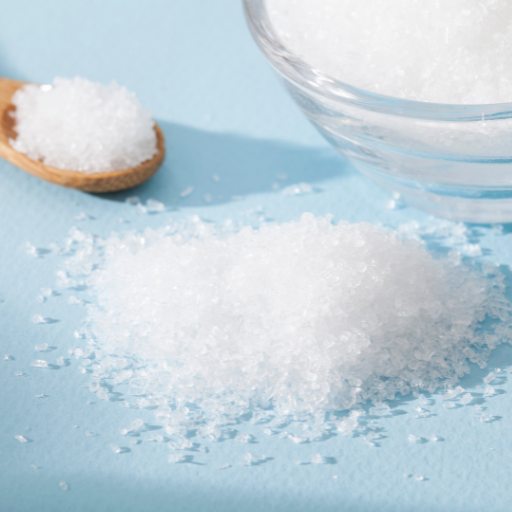
One of the most commonly asked question regarding the use of Epsom salt is whether it can be used on all types of plants. While Epsom salts, which are made up of magnesium sulfate, can be used on numerous plants, they do not work universally. It works well for plants that need more magnesium which includes peppers, roses and tomatoes. However, applying it to all plants without discretion might result in unbalanced nutrient levels, especially if the soil is already rich in magnesium. Before you apply the Epsom salts, ensure that you have done soil and leaf tests to confirm their appropriateness and necessity in your particular plant.
Can You Apply Too Much Epsom Salt?
It’s true that using excess amounts of epsom salt may harm both your soil and plants. An overdose tends to build up an excessive amount of magnesium over time, thereby preventing other essential nutrients, such as calcium or potassium, from being taken up by plants, leading to nutrient imbalance. It can also cause pollution in soils as well as waters due to overuse. Therefore, it is important to follow prescribed rates and schedules during the application process. To avoid misuse while maintaining healthy vegetation, regular soil/leaf tests must be conducted for optimal levels.
How Does Weather Affect The Application Of Epsom Salts?
The effectiveness and timing of applying epsomsalts greatly depends on the weather. In times of excessive rain, nutrients from Epsom salt may leach out before being assimilated by plants making it less effective. On the other hand, during dry spells the absence of sufficient soil moisture can impede magnesium and sulfur intake in Epsom salts thus necessitating additional irrigation for proper absorption. In addition, extreme temperatures on both ends can influence soil chemistry and nutrient availability, hence calling for adjustments to be made in timing and amounts applied, respectively. It is advisable to apply the product when weather conditions are mild and constant so that maximum benefits could be realized.
What Are The Long-Term Effects Of Regularly Using Epsom Salt On Tomato Plants?
There are several advantages associated with the long-term application of Epsom salt to tomato plants, as well as possible risks involved. With regular use, magnesium deficiency can be prevented which is vital for photosynthesis and plant growth in general. This will result in increased fruit production and better plant health overall. However, if used excessively over a long period it can cause an accumulation of magnesium levels within the soil leading to nutrient imbalances especially involving calcium and potassium. These problems may result into blossom end rot or other nutrient-related disorders affecting tomatoes. Therefore, even though Epsom salts may be useful for addressing specific nutritional deficits among crops, it should always be used sparingly along with ongoing soil analysis to avoid adverse consequences.
Frequently Asked Questions (FAQs)
Q: How often should I add Epsom salt to my tomato plants?
A: It is recommended to add Epsom salt to tomato plants every two weeks. This helps ensure the plants receive a consistent supply of magnesium, which is vital for their growth and health.
Q: How much Epsom salt do I need per foot of tomato plant?
A: You should use two tablespoons of Epsom salt per foot of plant height. This dosage helps ensure the plants get enough magnesium to prevent deficiencies.
Q: Can I use Epsom salt in my entire vegetable garden?
A: Yes, you can use Epsom salt in your vegetable garden to benefit crops like tomatoes and pepper plants. Epsom salt helps improve the soil’s nutrient content and can promote healthy plant growth.
Q: How do I apply Epsom salt to my tomato plants?
A: You can add Epsom salt to the soil directly or dissolve it in water to create a water-soluble solution. For a foliar spray, mix Epsom salt with water in a spray bottle and apply it to the leaves every two weeks using a fine spray setting.
Q: Why is magnesium important for my tomato plants?
A: Magnesium is a key nutrient required for photosynthesis and the production of chlorophyll. A magnesium deficiency can lead to poor growth and yellowing of leaves, thus affecting your harvest.
Q: Can I add Epsom salt to my compost?
A: Yes, you can add Epsom salt to your compost. It’s also good for boosting the magnesium content in your compost, which in turn benefits your garden when the compost is applied.
Q: How do I know if my soil needs Epsom salt?
A: Conducting a soil test can help you determine if your soil lacks magnesium. If the test reveals a magnesium deficiency, you can add Epsom salt to the soil to correct the imbalance.
Q: When should I start adding Epsom salt during the tomato plant’s growth cycle?
A: You can start adding Epsom salt as early as the seed germination stage. Continue to add it periodically through the plant’s growth stages, especially when you notice signs of magnesium deficiency.
Q: Can Epsom salt be used for other plants besides tomatoes?
A: Yes, Epsom salt can be beneficial for a variety of plants like pepper plants and other vegetables in your garden. It helps supply necessary nutrients and can improve plant health and productivity.
Q: Is it safe to use Epsom salt during all seasons?
A: Yes, it is safe to use Epsom salt throughout the growing season. Consistent application, every two weeks, can help maintain optimal nutrient levels in the soil and support robust plant growth.






